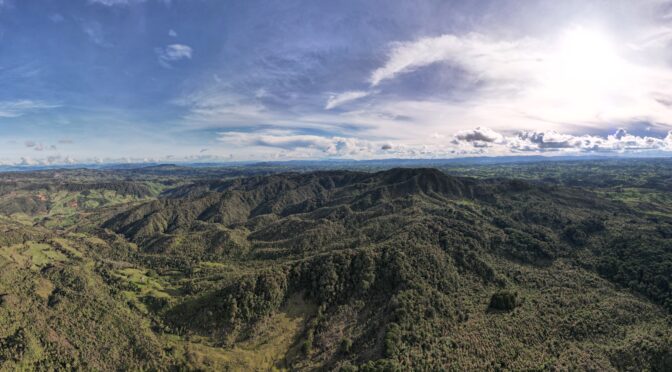
Response Doctoral Program
The tropics lost a whopping 4.1 million hectares of primary forests in 2022, equivalent to losing 11 football fields of forest per minute, according to research from the World Resources Institute. Numerous restoration projects worldwide target counteracting these large scales of forest destruction that are causing insurmountable loss of biodiversity. By planting native vegetation as well as by assisting in natural regrowth of vegetation, these projects aim to restore degraded forests back to their flourishing state. These efforts are not just about the trees. They are crucial for the recovery of animal communities too. However, it is unfortunately undermined by the limited data available on the influence of forest loss and regeneration on recovery of faunal species and communities.
Continue reading Unlocking Forest Restoration Success: DNA traces are Revolutionizing Wildlife Monitoring and Conservation →

Response Doctoral Program
The tropics lost a whopping 4.1 million hectares of primary forests in 2022, equivalent to losing 11 football fields of forest per minute, according to research from the World Resources Institute. Numerous restoration projects worldwide target counteracting these large scales of forest destruction that are causing insurmountable loss of biodiversity. By planting native vegetation as well as by assisting in natural regrowth of vegetation, these projects aim to restore degraded forests back to their flourishing state. These efforts are not just about the trees. They are crucial for the recovery of animal communities too. However, it is unfortunately undermined by the limited data available on the influence of forest loss and regeneration on recovery of faunal species and communities.
Continue reading Unlocking Forest Restoration Success: DNA traces are Revolutionizing Wildlife Monitoring and Conservation →

Response Doctoral Program
In the vast expanse of sub-Saharan Africa, trees sustain the timeless tradition of producing charcoal; the very charcoal used to grill food at barbecues. Charcoal is a vital energy source fueling households and industries. Having said that, this seemingly innocuous practice of burning wood in a kiln comes at a hefty price tag. Converting trees to charcoal disrupts the delicate balance of carbon in ecosystems, with consequences that reverberate far beyond the local landscape.
Continue reading Charcoal Chronicles: Navigating Environmental Sustainability and Societal Needs in sub-Saharan Africa →

The future of land-use in Switzerland under the new Global Biodiversity Framework (COP15).
Download Summary Report (including group protocols) (PDF)
On September 26, 2023, the PSC organized a Fireside chat in collaboration with the Franxini Project. At the 15th UN Biodiversity Conference (COP15, 2022) in Montreal, Canada, all 195 countries agreed that 30% of land and water areas should be reserved for habitat and species protection.
Around 40 participants composed of PSC scientists, the Franxini team, representatives of governmental and non-governmental organizations discussed what Switzerland could look like assuming that the biodiversity targets as formulated in Kunming and Montreal will be met in 2030.
Continue reading Science & Policy Stakeholder Event →
Engaging in a Science and Policy Dialogue



